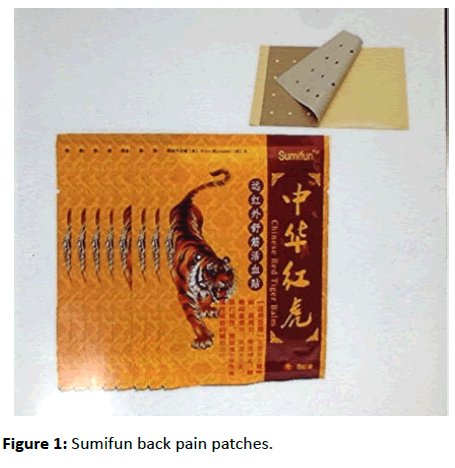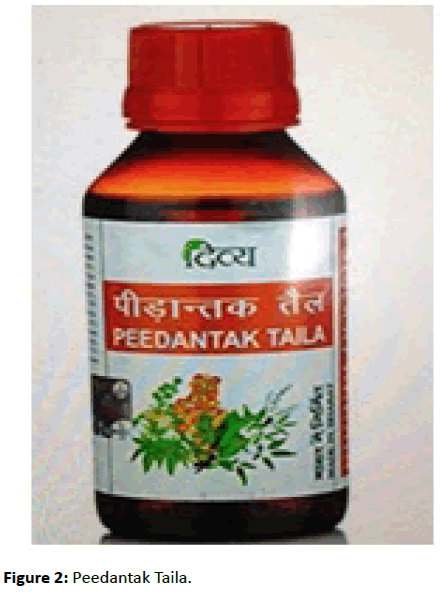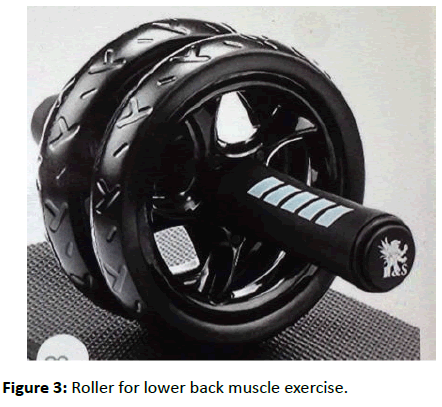Conservative Treatment of Traumatic Lower Back Pain: Case Report and Literature Review
Atul Dwivedi, Shweta Shukla Dwivedi, Muhammad Raheel Tariq*, Mohammad Shoaib, Xiaoming Qiu, SuZhen Hong and Yu Xin
Published Date: 2019-07-10Atul Dwivedi1, Shweta Shukla Dwivedi2, Muhammad Raheel Tariq3*, Mohammad Shoaib3, Xiaoming Qiu4, SuZhen Hong1 and Yu Xin1
1Department of Clinical and Basic Sciences, Medical College of Hubei Polytechnic University (HBPU), Core Member of Research Society of HBPU, Hubei, Huangshi, China
2Department of Dental Surgery, Madhya Pradesh, Jabalpur, India
3Department of Internal Medicine, North Sichuan Medical College, Nanchong, China
4Department of Radiology, Huangshi Central Hospital, Affiliated Hospital of Hubei Polytechnic University, Edong Health Care Group, China
- *Corresponding Author:
- Muhammad Raheel Tariq
Department of Internal Medicine
North Sichuan Medical College
Nanchong, China
Tel: +8613982444912
E-mail: 774802458@qq.com
Received date: June 18, 2019; Accepted date: July 2, 2019; Published date: July 10, 2019
Citation: Dwivedi A, Dwivedi SS, Tariq MR, Shoaib M, Qiu X, et al. (2019) Conservative Treatment of Traumatic Lower Back Pain : Case report and Literature Review. J Clin Exp Orthop Vol.5 No.2:68.
Copyright: © 2019 Dwivedi A, et al. This is an open-access article distributed under the terms of the Creative Commons Attribution License, which permits unrestricted use, distribution, and reproduction in any medium, provided the original author and source are credited.
Abstract
This case report describes a traumatic lower back pain with a severe intensity, which was relieved by the multispecialty and multidirectional conservative treatment. After 4 months, the patient recovered from severe lower back pain up to a great extent (almost totally). Here multispecialty and multidirectional conservative treatment was consisting of unsaid (diclofenac potassium), antacids (pantoprazole), muscle relaxant (chlorzoxazone), TCM, regular back muscle exercise, daily morning and evening walk, weight loss, Peedantak Taila (ayurvedic oil), TCM bandages.
Keywords
Conservative treatment; TCM; Traumatic lower back pain; Severe pain
Introduction
About 90% of people suffer from lower back pain at some point in time in their lives [1]. Lower back pain can be broadly classified into Traumatic and Non-Traumatic lower back pain.
Traumatic LBP caused by fall on stairs, Motor Vehicle Accidents (MVA), fall on the slippery surface, etc.
Non Traumatic lower back pain may arise from chronic muscle injury in the lower back muscles and Lumbar Disc Degeneration Disease (LDDD), spinal malignancy, vertebral fractures.
Back pain can also be classified into three categories based on the duration of symptoms: Acute back pain is defined as the pain that has been presented for six weeks or less. Subacute pain is of 6-12 weeks of duration and chronic pain lasts longer than 12 weeks [2].
Factors such as lifting, prolonged sitting, heavy work, bus driving, obesity, smoking, tutors, fractures, elderly with steroid therapy and psychological issues may cause LBP [3-5].
There are recommendations for the diagnosis of LBP:
• History and physical examination for identification of risk factors related to LBP are given in (Table 1). If acute lower back pain improves in one month in more than ninety percent case, and red flag signs are absent, in that case, further evaluation is not needed
| Neurological symptoms | Historical features | Patient demographics |
|---|---|---|
| Saddle-block anaesthesia | weight-loss | Age >70 years |
| Bowel or bladder dysfunction | Fever | Cancer history |
| progressive motor weakness | The pain increased by rest | Glucocorticoid therapy or immunosuppressant therapy |
| IV drug use or Alcohol | ||
Table 1: Red flag signs [6], lower back pain may involve these underlying conditions.
• If pain persisted after 4-6 weeks of conservative treatment, suggest patient to get plain X-Ray and basic lab investigation (CBC, ESR, Urine analysis) to screen systemic disorder
• MRI to confirm herniated disc, spinal stenosis, neoplasm, infections or other spinal lesion. MRI is highly sensitive for soft tissue lesion
• In selected patients, we can differentiate lumbar radiculopathy from other reason of radiculopathy leg pain through Electromyography
• Myelogram CT Scanning is able to confirm lumbar stenosis in selected patients. Myelogram CT scanning and MRI are similar in sensitivity and specialty [6]. Here we are
• going to present a unique case of severe trauma induced low back pain
Case Report
A 39 years old male presented to the orthopedics department with a history of fall on the bus stairs. As the driver suddenly turn the bus into the opposite direction and the patient lost the balance and fall on the stairs on his back. The pain was severe and the patient was not able to walk himself, the driver stopped the bus and helped him to get off the bus. Patient came back to his living area slowly.
At night patient felt restless and was not able to bend down, remove his shoes, and even take off his Jeans, etc.
Turning in bed caused pain and the patient was not able to sleep, soon after getting a comfortable position, the patient was able to fall back to sleep. His VAS (Visual Analog Score) was 5-9/10.
VAS Score was 9/10 at the time of blunt injury on bus stairs and it was consecutively decreasing day by day.
The following day he came to the Out Patient Department (OPD). At this moment, the patient was representing very limited movements in the lumbar region and he can't bend and sit without support. Even he can't stand up from the sitting position, lie in the bed without strong support.
At the time of sitting, standing and bending the lumbar spine, he was feeling severe and unbearable pain. The patient was feeling tired due to LBP. The pain was aggravated by prolonged standing, bending and lifting heavy weights and eased by sitting in a comfortable position and painkiller medications.
On physical examination and thorough history taking process, we found that the patient was without any Red Flag Sign like Bowel and bladder dysfunction, saddle block anaesthesia (numbness of anus, genitalia and perineum) and progressive motor weakness, cancer history, steroid therapy, alcohol consumption history, weakness or numbness in a lower limb or upper limb, foot drop, gait disturbances etc.
So we just suggested the patient with radiological investigations.
On X-ray investigation, there was no vertebral fracture; all lumbar vertebras and sacroiliac joint were intact. As the patient ’ s chief complaint was severe lumbar back pain on bending and sitting so we prescribed the patient with conservative treatment. This conservative Treatment was consisting of bed rest for one week and medications such as a combination of a Muscle relaxant (chlorzoxazone), Analgesics (Diclofenac potassium) and combination of Domperidone Pantoprazole. These medications were of sustained release type for having sustained relief for a long time.
We prescribed him Diclofenac potassium in place of Diclofenac sodium as the patient was hypertensive since last 3 years.
The patient started his daily activities after 6 days of injury and severity of lower back pain also lessens. On follow up after 7 days patient also reported that he also used sticky bandages with Chinese medications for 2 weeks. This Chinese medication bandage can keep the back muscle warm and give an optimal temperature for healing. After 2 weeks of application of Chinese medicated bandage, severity, and intensity of lower back pain lowered up to a great extent dramatically; however, the pain was not relieved totally.
As the Chinese medicated bandages are sticky and providing warmth so there were skin tears on back side ultimately the patients stopped applying it on skin.
After being suggested by family members, he started applying Indian Ayurvedic and Herbal oil Peedantak Taila (PT) on affected Left Lower back side at night. Within a week the patient's lower back pain was relieved up till a great extent. After continuous use of PT up till 2 months, the patient's all lumbar spine movements became painless.
He had also been able to relieve his back pain with several self-designed measures including, weight loss (high protein and low carbohydrate diet, high fiber diet) regular back muscle exercise with Roller. Back muscle mobilization exercise, evening and morning walk, sustained routine activities, etc.
This traumatic lower back pain relieved totally within four months after injury, however, sometimes in cold weather patient often feels lower back pain with super mild intensity. We assume that severe pain was because of muscular injury.
Discussion
The vast majority of LBP caused by sprains strains, intervertebral disc degeneration, Herniated or ruptured disc, spondylolisthesis, spinal stenosis, infections, tumors, cauda equina syndrome, etc.
In case of intervertebral disc herniation, spinal stenosis when the red flag signs worsen we may choose Artificial Cervical Disc Replacement (ACDR) "A Double-Edged Sword" surgical intervention with careful planning, as the artificial cervical disc is a motion-sparing device but has its own inevitable complications such as Heterotopic ossification [7].
Manheimer et al. [8] showed short term effectiveness of acupuncture for chronic mechanical low back pain as like previous evidence.
Lower back pain originating in posterior abdominal organs may be due to spinal metastasis.
Cure the underlying diseases to treat LBP.
LBP can also be cured by surgery in early stages or after monitoring conservative treatment. The third way of treating LBP is by non-surgical methods such as
• Restricted physical activity
• Physical therapy (traction and thermotherapy)
• Attempt to increase muscle strength by stretching and relaxation exercise, bone strength by imposing load on bones
• Correction of kyphosis and scoliosis as much as possible
• Elimination of pain by nerve blocks and local blocks, NSAID drugs, antibiotics, and anti-tubercular drugs
• Psychotherapy for psychogenic LBP counseling
• Guidance for lifestyle modification like correct posture and daily routine activities schedule modification [9]
Lower back pain is a complex scenario to manage with the multidirectional and multi-specialty approach. For instance, at the initial stage of treatment, our foremost goal is to relieve and lessen the intensity and severity of pain. Once the pain is controlled, bending, sitting, lying in bed and back muscle functions restored, then the only the patient can get further consultation from rehabilitation experts and also physiotherapists. While at another point, the patient may need other traditional treatment like Traditional Chinese Medicine (TCM) treatment, yoga therapy, ayurvedic treatment, etc. As in our case-patient got relief from TCM bandages (Sumifun Back Pain Patches, Chinese medicine plaster, Bone pain relieving hot patches, it is a muscle and joint pain relieving medication) and Indian Ayurvedic oil applications (Figures 1-3). In LBP case, we may need long time equilibrium between different specialties of medicine, TCM, Acupuncture and moxibustion, and Indian Ayurveda etc.
Conclusion
In case of Traumatic LBP, if the patient is without red flag sign, we should always opt conservative treatment with NSAID and muscle relaxant, on the other hand, we should also educate the patients and their family members to relieve the LBP.
Apart from western medicine, Traditional Chinese Medicine (TCM) bandages, Indian Ayurvedic oil also very effective for treating recurrent and traumatic lower back pain.
Plus point about using TCM and Indian Ayurvedic oil is that there is no adverse effect and easily applicable on the affected backside.
References
- Frymoyer JD (1988) Back pain and sciatica. N Engl J Med 318: 291-300.
- Carey TS, Garrett J, Jackman A (1995) The outcomes and costs of care for acute low back pain among patients seen by primary care practitioners, chiropractors and orthopedic surgeons: The North Carolina Back Pain Project. N Engl J Med 333: 913-917.
- Deyo RA, Bass JE (1989) Lifestyle and low back pain: the influence of smoking and obesity. Spine 14: 501-506.
- Feldman DE, Rossignol M, Shrier I (1999) A risk factor for development of low back pain in adolescent. Spine 24: 2492-2496.
- Burton AK, Tillotson M, Main CJ (1995) Psychological predictor of outcome in acute and sub-chronic low back trouble. Spine 20: 722-728.
- Munir JN (2005) How to approach the problem of low back pain: An overview. J Family Community Med 12: 3-9.
- Dwivedi A, Wu XJ, Dwivedi SS, Abdallah D, Sarbesh K, et al. (2017) Artificial Cervical Disc replacement,"a double edged sword" a clinical review. IJCMR 4: 1163-1168.
- Manheimer E, White A, Berman B (2005) Meta-analysis: Acupuncture for low back pain. Ann Intern Med 142: 651-663.
- Hayashi Y (2004) Classification, diagnosis and treatment of low back pain. JMAJ 47: 227-233.
Open Access Journals
- Aquaculture & Veterinary Science
- Chemistry & Chemical Sciences
- Clinical Sciences
- Engineering
- General Science
- Genetics & Molecular Biology
- Health Care & Nursing
- Immunology & Microbiology
- Materials Science
- Mathematics & Physics
- Medical Sciences
- Neurology & Psychiatry
- Oncology & Cancer Science
- Pharmaceutical Sciences



